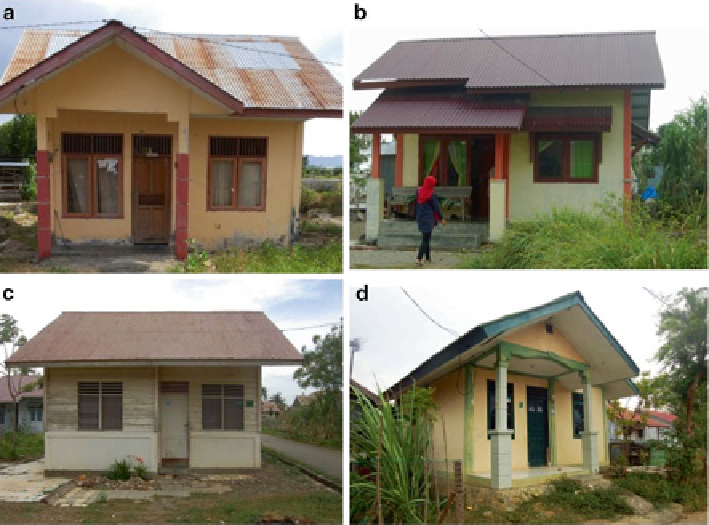Environmental Engineering Reference
In-Depth Information
Fig. 5.4
Different type of houses built by different donors resulting different design and quality at
Alue Deah Tengoh (
a
) “Permanent house” built by BRR (
b
) “Permanent house” built by Caritas
(
c
) “Semi permanent house” built by YBI (
d
) “Permanent house” built by Oxfam
to villages and offered their support in order to build new houses. With a single
donors being unable to assume the reconstructions of the entire village, each orga-
nization was responsible to rebuild a certain number of houses while being super-
vised by the local government and the BRR.
The physical construction was carried out by contractors directly appointed by
the donors. The members of the community were not consulted by the donors and
could only 'monitor' the building of their houses on a voluntary basis. The benefi -
ciaries of this new housing who were not staying in the village could not monitor the
construction process of their houses at all.
The YBI, one of the donors, built almost 30 % of the new houses using the local
contractor. The 119 houses erected were of the semi-permanent type with half of the
houses made of wood.
The result of the questionnaire-based survey and other interviews suggest that
almost all of the inhabitants who received semi-permanent houses from YBI were
unsatisfi ed (the questionnaire surveyed 10 % of total YBI benefi ciaries). They felt
that their condition was unfair when compared with that of those people who
received permanent houses built by other donors within the same village.
Another example is Oxfam building 81 semi-permanent houses made of mix
concrete brick and wood materials, later to be remodeled into permanent structures.
During the reconstruction process, Oxfam faced diffi culties in getting supplies of

Search WWH ::

Custom Search